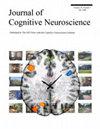Specifying Precision in Visual-orthographic Prediction Error Representations for a Better Understanding of Efficient Reading
IF 3
3区 医学
Q2 NEUROSCIENCES
引用次数: 0
Abstract
Efficient visual word recognition presumably relies on orthographic prediction error (oPE) representations. On the basis of a transparent neurocognitive computational model rooted in the principles of the predictive coding framework, we postulated that readers optimize their percept by removing redundant visual signals, allowing them to focus on the informative aspects of the sensory input (i.e., the oPE). Here, we explore alternative oPE implementations, testing whether increased precision by assuming all-or-nothing signaling and more realistic word lexicons results in adequate representations underlying efficient word recognition. We used behavioral and electrophysiological data (i.e., EEG) for model evaluation. More precise oPE representations (i.e., implementing a binary signaling and a frequency-sorted lexicon with the 500 most common five-letter words) explained variance in behavioral responses and electrophysiological data 300 msec after stimulus onset best. The original less-precise oPE representation still best explains early brain activation. This pattern suggests a dynamic adaption of represented visual-orthographic information, where initial graded prediction errors convert into binary representations, allowing accurate retrieval of word meaning. These results offer a neurocognitive plausible account of efficient word recognition, emphasizing visual-orthographic information in the form of prediction error representations central to the transition from perceptual processing to the access of word meaning.在视觉正字法预测误差表示中指定精度,以便更好地理解高效阅读。
有效的视觉词识别可能依赖于正字法预测误差(oPE)表示。在基于预测编码框架原则的透明神经认知计算模型的基础上,我们假设读者通过去除冗余的视觉信号来优化他们的感知,使他们能够专注于感官输入的信息方面(即op)。在这里,我们探讨了其他的oPE实现,通过假设全有或全无的信号和更现实的单词词典来测试是否提高了精度,从而在有效的单词识别基础上产生足够的表示。我们使用行为和电生理数据(即脑电图)进行模型评估。更精确的oPE表示(即,实现二进制信号和包含500个最常见的五个字母单词的频率排序词典)可以最好地解释刺激开始后300毫秒行为反应和电生理数据的差异。最初的不太精确的脑电图表征仍然最好地解释了早期大脑活动。这种模式表明了对所表示的视觉正字法信息的动态适应,其中最初的分级预测错误转换为二进制表示,从而允许准确检索单词含义。这些结果为有效的单词识别提供了一个神经认知的合理解释,强调了以预测误差表征形式出现的视觉正字法信息是从感知处理到获取单词含义的过渡的核心。
本文章由计算机程序翻译,如有差异,请以英文原文为准。
求助全文
约1分钟内获得全文
求助全文
来源期刊
CiteScore
5.30
自引率
3.10%
发文量
151
审稿时长
3-8 weeks
期刊介绍:
Journal of Cognitive Neuroscience investigates brain–behavior interaction and promotes lively interchange among the mind sciences.

 求助内容:
求助内容: 应助结果提醒方式:
应助结果提醒方式:


